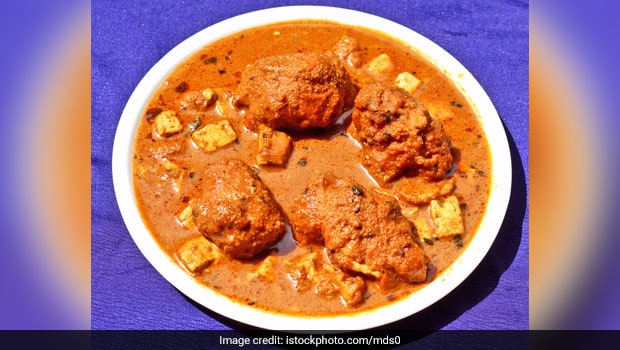When in 1868, the 22-year old Nobin Chandra Das created the spongy rashogolla by cooking the chenna balls in sugar syrup, little did he know that his sweetened cottage cheese wonders would bring about such a massive revolution in the food map of India. Across the national frontiers too, Rasgulla or roshogolla stands tall as one of the most renowned Indian sweetmeats ever produced. What is so special about the sweet you ask? Perhaps its melt-in-the-mouth quality or its spongy texture, but if you ask food experts, many would agree that it was for its ingenious use of chenna or channa (split milk).
While chenna-based sweetmeats became a rage and got the eastern part of the country hooked, somewhere in the west an ingenious mind came up with the idea of using these chenna balls in a spicy curry and come up with 'Rasgulle ki Sabzi'! Yes, you heard us right - a 'subzi' made of your favourite spongy rasgullas. In the arid regions of Rajasthan, particularly Jodhpur, innovative curries like Rasgulle ki sabzi and Gulab Jamun ki sabzi are some of the popular main course dishes. The name does draw your attention to it, but these are not sweet dishes or desserts. Fried balls of chenna are cooked in a tangy and creamy gravy to get an absolutely lip-smacking delight. Rajasthan and its spicy preparations need no introduction, be it the spicy gate ki sabzi, laal maas or daal baati churma. Rajasthani food is often dominated by dry spices, daals and dairy products like milk, cream and butter. All of the delicacies originating from this dry-arid region used the available resources in the most innovative ways. Rasgulle ki sabzi too is a dry, thick gravy made of chenna balls and goes best with any roti/chapatti/ naan or rice. While this dish is not widely available anymore, some smaller eateries that specialise in traditional Rajasthani dishes might be able to rustle some up for you.

Rasgulle ki sabzi cooked in a tangy and creamy gravy to get an absolutely lip-smacking delight
Using channa or chenna as an ingredient has had a bitter-sweet trail of its own in the history of Indian cooking . Renowned food historian KT Achaya explains in his book, 'A Historical Dictionary of Indian Food' defines channa as "Acidification of milk. Either deliberately or through spoilage, yields channa as a precipitate. However, an Aryan taboo on the 'deliberate breaking of milk' meant that this was not favoured food item. When the Portuguese who had settled in Calcutta in the early nineteenth century needed cottage cheese, which is similarly made, Bengali sweetmeat makers found themselves with a new raw material, channa or chenna on which they could lavish their creative energies, to produce a profusion of sweets. "
Here is a recipe of Rasgulle ki Sabzi by youtuber(Something's Cooking With Alpa) and food blogger Alpa Munjal you can try at home. Do tell us how it turns out.
About Sushmita SenguptaSharing a strong penchant for food, Sushmita loves all things good, cheesy and greasy. Her other favourite pastime activities other than discussing food includes, reading, watching movies and binge-watching TV shows.








